
Editor’s Note: Article courtesy Overland Journal (European Offices)
Has the King lost his crown? As predator adventure motorcycle brands bite at the heels of BMW’s 35-year-old adventure bike series, will the company have to stand aside to allow newer, savvier brands into the number one spot. Has the momentum triggered by the Ewan McGregor and Charley Boorman combo finally lost its thrust?
These sentiments seem to get rolled out following the announcement of any new kid (or even old kid) on the block and can oft be found in many of the regular motorcycle press offerings. The fast moving Austrians continue to expand (some say confuse) their KTM adventure bike range, while Ducati, Triumph, Honda et al, all have highly credible alternative overland bikes ready to de-throne BMW’s GS.
So do these headline stealing one-liners hold an element of truth? After all, when all’s said and done, the BMW’s ‘boxer’ engine is pretty long in the tooth. Its basic design harks back to the 1920’s. Add to this the occasional critical comment, ‘too heavy’, ‘too big’, ‘too hyped’ – and perhaps we are witnessing an overdue change to the leader board? A position BMW have held, many would argue, since the launch of the BMW R80 G/S over thirty-five years ago.
But hey, let’s just fix that stuck record, let’s wind back that brass neck, take in a little history and more importantly examine todays new R1200 GS Rallye, out in a shop near you come March 2017.

The BMW GS Dynasty
Back in the late seventies, motorcycle sales for BMW were slacking, while the Japanese were, as they say stateside, kicking some ass! The boxer engine – famously a two cylinder horizontally opposed design, although respected, was seen by many as too ‘conservative’, too ‘dated’. Then, when BMW management decided to develop the
‘enduro’ and ‘sporting’ aspects of their bikes, winning various gold medals and event titles – including the highly regarding ‘Six Day Trials’ – in the process, the press grudgingly recognised that BMW were perhaps on to something. The trouble was, no-one was entirely sure as to what that something was?
Taking the success of the off-road capabilities and supplanting these ideas and designs into a new ‘all-rounder’ resulted in a multi-purpose bike hailed as the magic solution to waning sales. Still, this format went against popular thinking and was initially criticized as a compromise bike – neither a tourer, nor an off-roader.
BMW held their nerve. The BMW R80 G/S was launched to the world in Avignon, France, on 1 September 1980. It stole the show with a sales tag line of:
“Sports machine, touring machine, enduro… Welcome to a motorcycle concept with more than one string to its bow.”
BMW have never really looked back and interestingly you could use that same tag line today as the 21st century GS range has gone from strength to strength, offering a bike that could travel the highways, the byways and the dirt tracks and trails of the world. That said, the relative success of BMW’s adventure motorcycles in the 80’s / 90’s existed in a market that remained somewhat niche.
Then in 2004 along came two British actors, Ewan McGregor
(Trainspotting and Star Wars fame) and Charley Boorman (The Emerald
Forest and son of Hollywood Director, John Boorman – Deliverance, Excalibur and Point Blank) who gave an extra twist to the brands story after riding from London to New York using the BMW R1150 GS Adventure bike and in doing so created one of the most successful motorcycle travel documentaries ever made; the multiple award winning Long Way Round.
Many argue that this documentary helped push open the doors to adventure motorcycle travel, encouraging Mr and Mrs Average, to break the mould, buy a motorcycle and travel the world. That said, although the importance of the documentary in the growth of the adventure motorcycle genre had its detractors, Charley and Ewan both felt, too humbly perhaps, that they were simply in the right place at the right time.
Boorman’s personal view is…
“Well, if a pair of bloody actors can ride around the world, anyone can. We messed up lots of times and learnt from our mistakes. I think our message was really, any bike, any destination – just do it and have fun.”
Nevertheless, following the documentary, motorcycle sales across the adventure sector increased by a figure rumoured to be in excess of 60%.
The BMW GS brand had become synonymous with adventure travel, taking both bike and rider beyond borders and to the very edge of their capabilities.
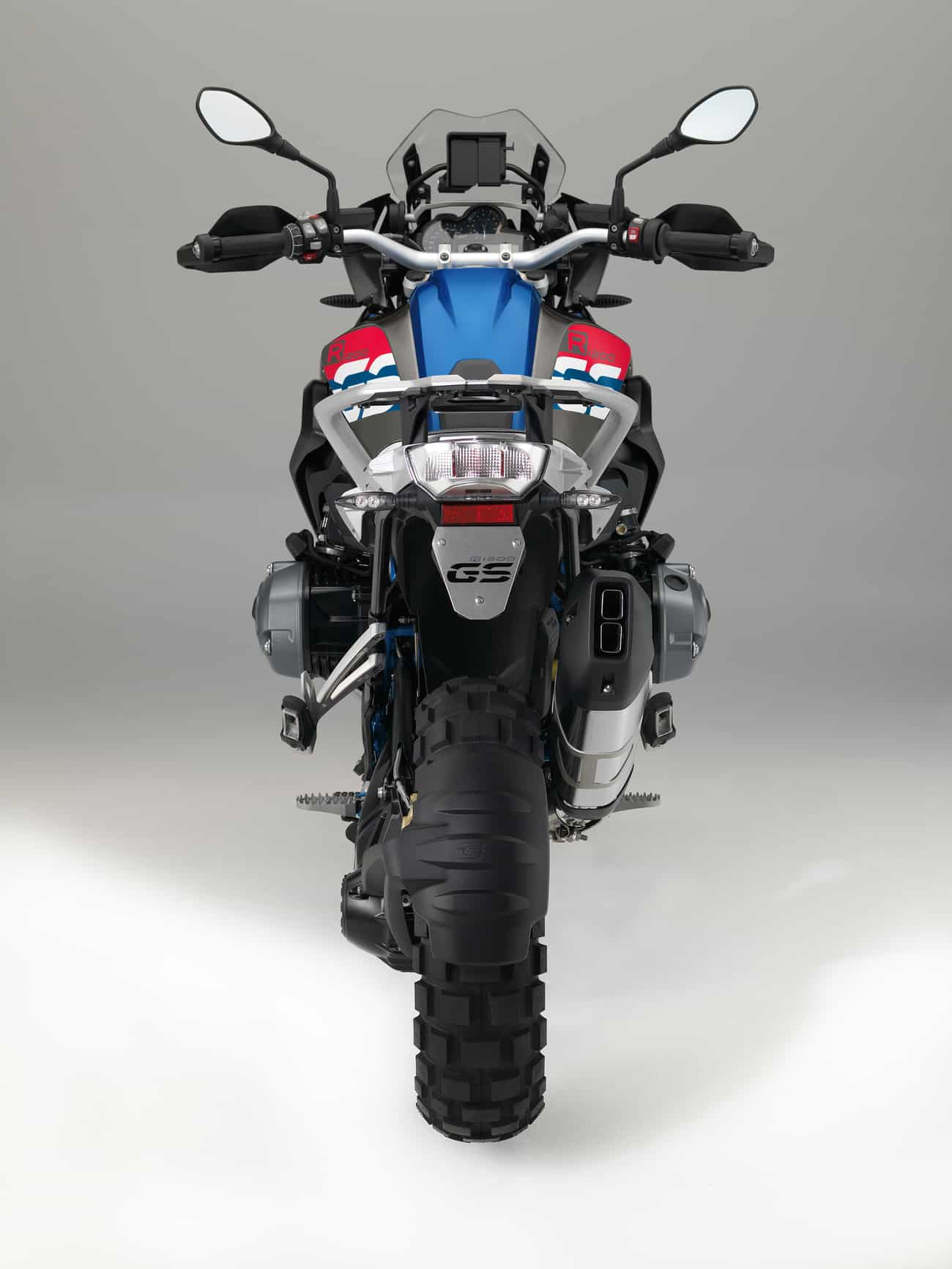
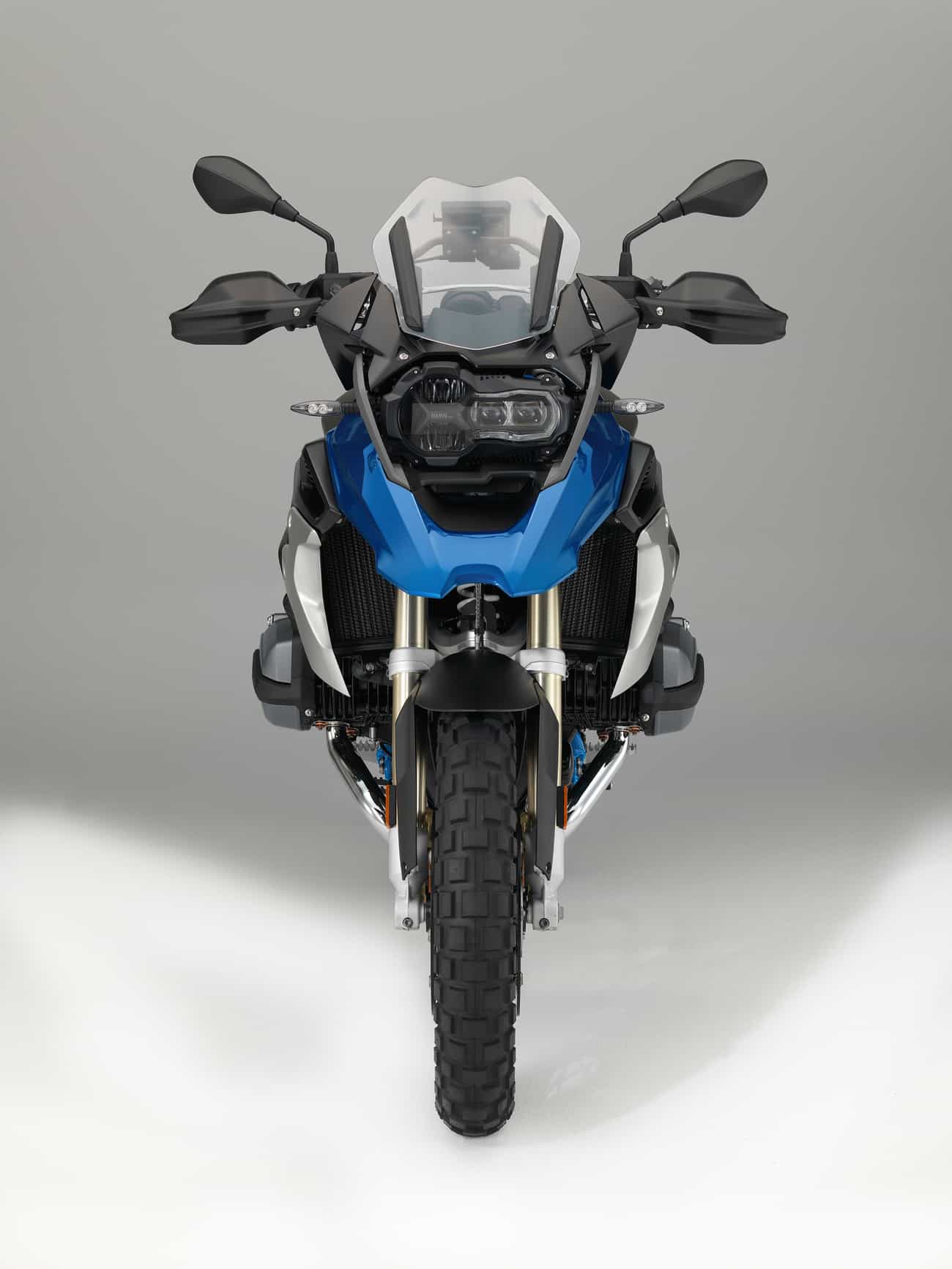
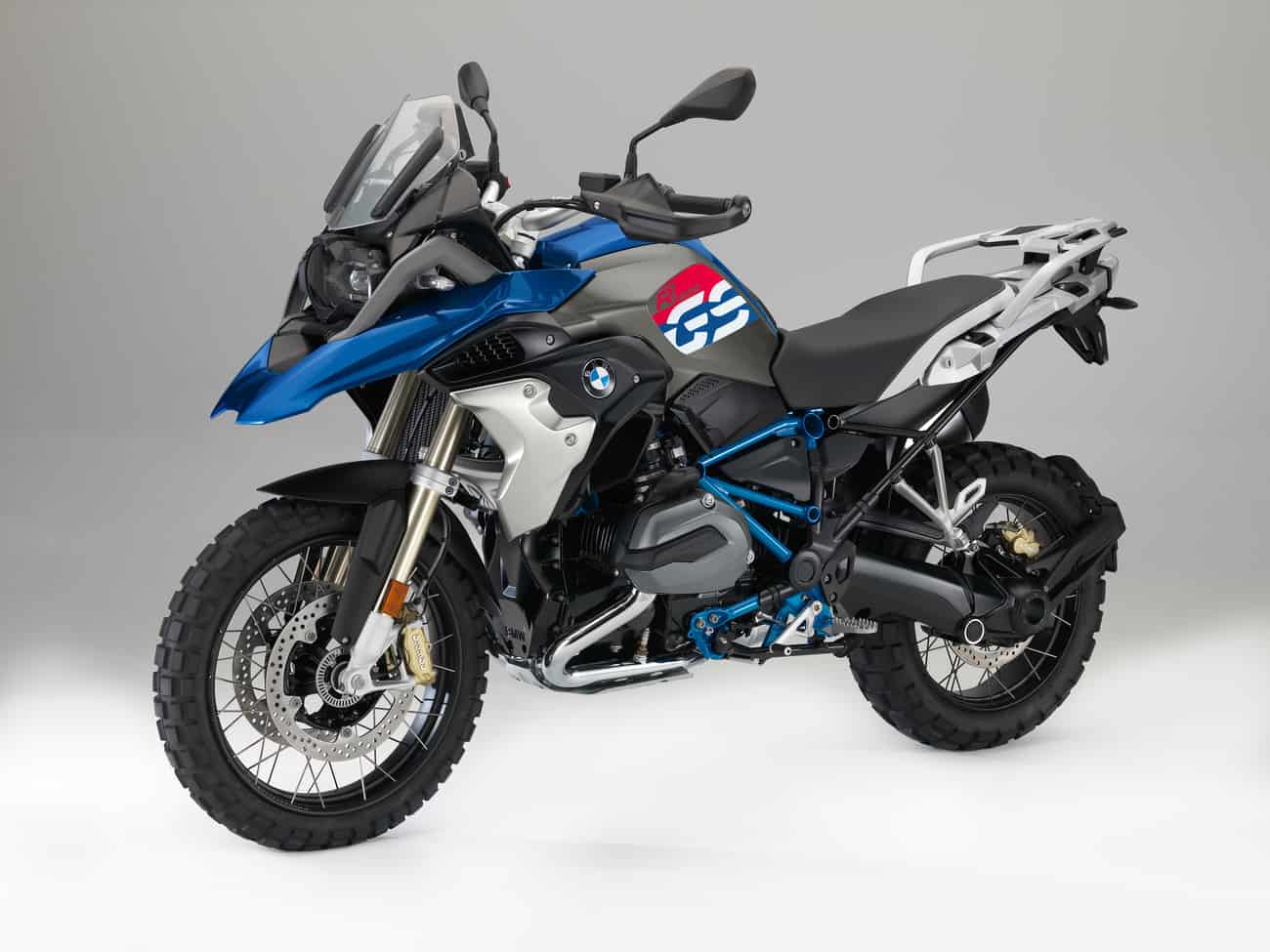
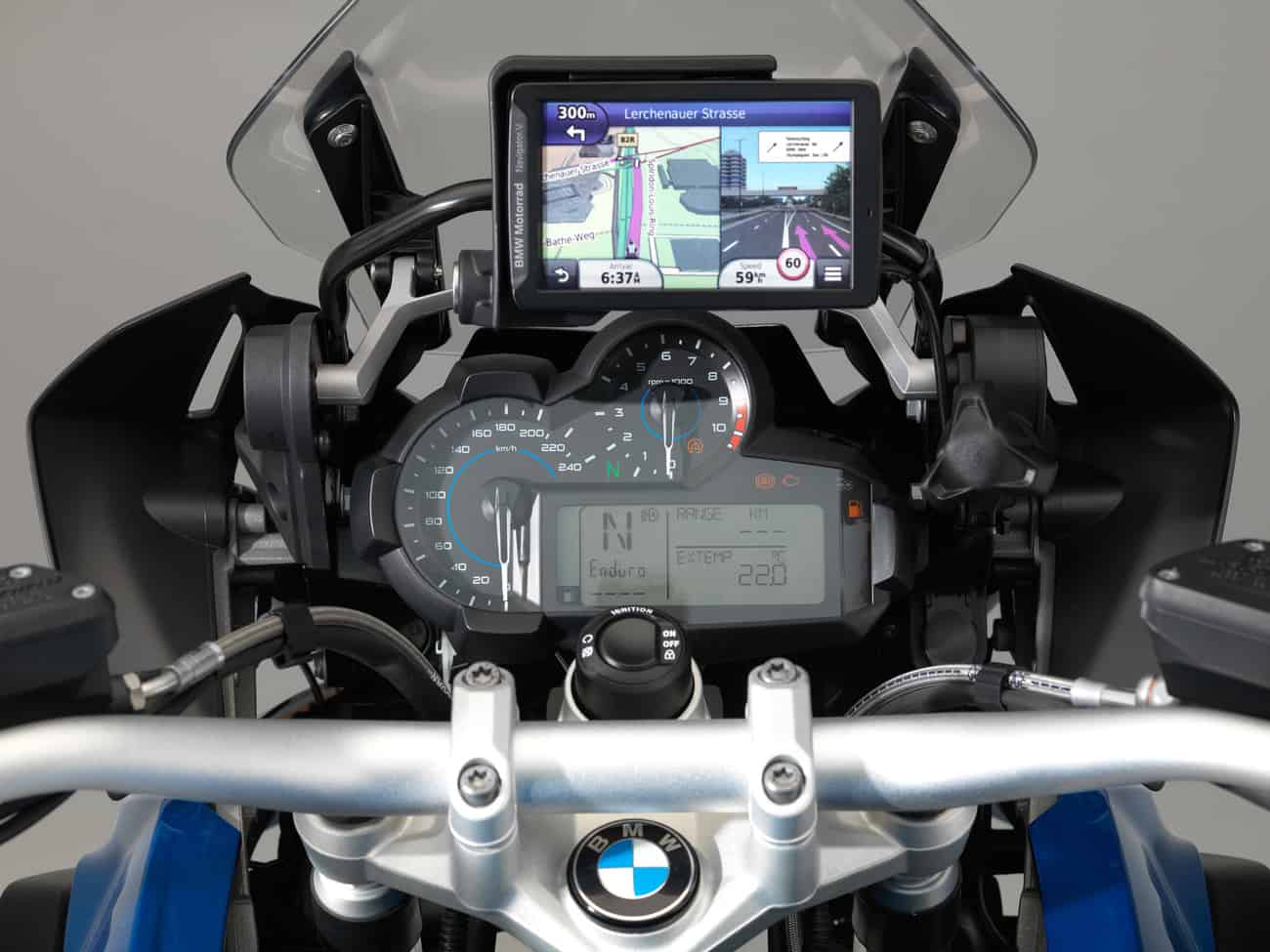
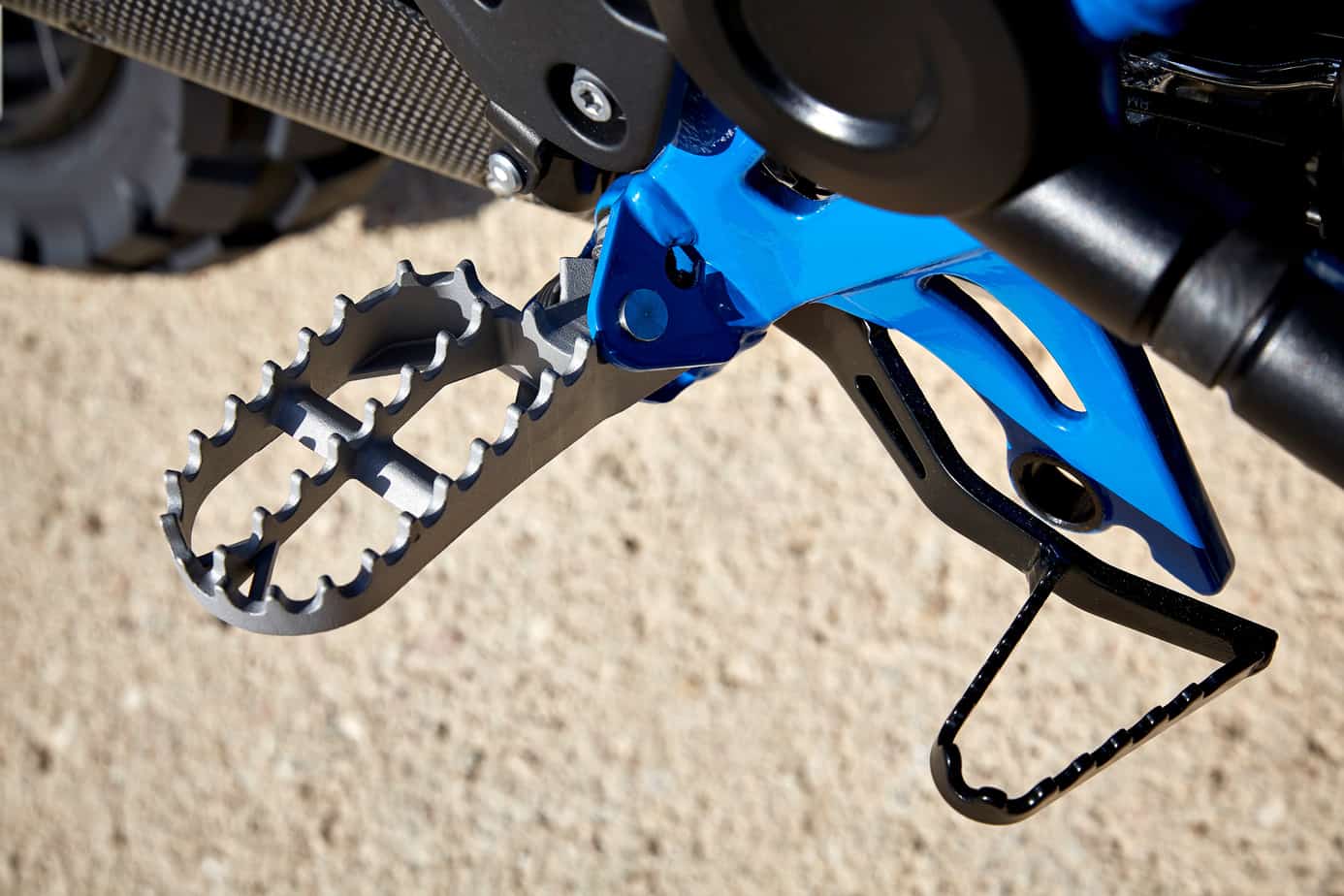
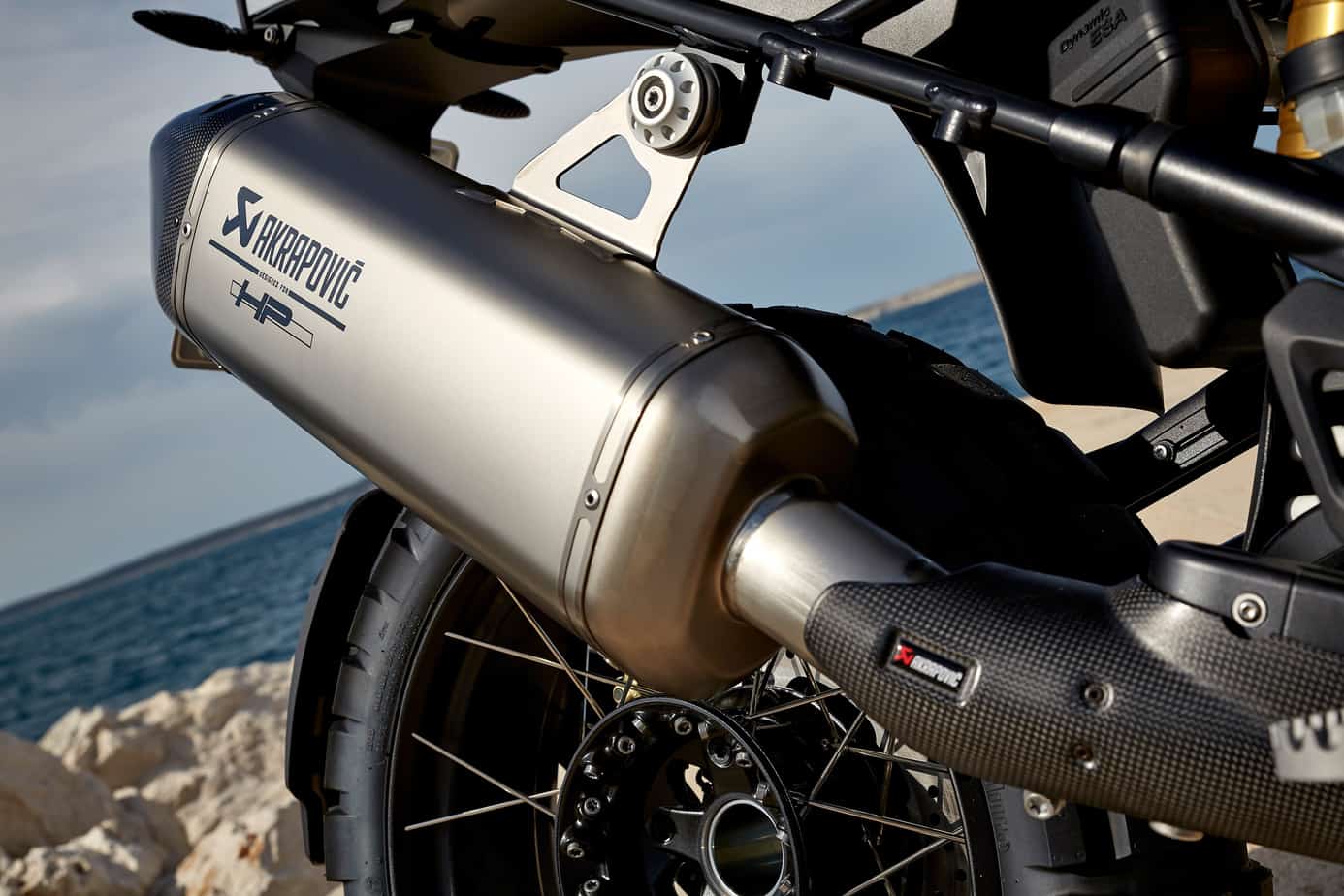
The New GS
The 2017 incarnation of the bike has two specific identities – the Exclusive and the Rallye. While both bikes retain that distinctive GS look, in simple terms, the Exclusive is the road focussed edition, having a relatively low key look, a non aggressive stance, with sleek lines, cast wheels and attractive subtle colour schemes – metallic matt chocolate browns and greys with gold finished brake calipers.
In contrast, the Rallye is flash. It has a menacing glint in it’s eye and just overflows with adventurous character. Set off with wide aggressive looking foot pegs, knobbly tires on cross spoke wheels and short enduro type windshield. It really does look a picture, focussed clearly on adventure and promising significant off road ability.
What helps the Rallye stand out visually is the strong blues of the tank and beak (Lupine Blue) together with the Cordoba blue of the frame – this contrasting frame paint is perhaps an idea copied from Austrian rivals? For those of you who remember the now discontinued BMW HP2 Enduro, you may find at least some visual similarities.
The off-road bias of the Rallye is strengthened with stiffer spring rates, longer spring struts and extra travel. Add to this, the flattened Rallye seat, giving you room to adjust body weight easily when off road, radiator and frame guards and on this particular bike, an optional Akrapovic exhaust.
Strangely, the Rallye looks lighter than it is, especially considering that both bikes are now Euro 4 compliant which in essence means beefier (heavier) catalytic converters.

The Ride
My interest was blatantly the Rallye, although I rode both bikes and was pretty impressed with the Exclusive edition on the twisty mountain roads of southern Spain. However, when we went up into the hills, across rivers and sandy trails, as well as rocky climbs and fast gravel tracks – the Rallye really excelled.
The bikes performance and capability off-road is admittedly surprising for a weigh in of 244 kilos, and what’s more incredible is the bike doesn’t actually feel heavy. Standing on the meaty wide foot pegs really makes you feel planted on the bike and within a very short space of time, I found I was riding it like an enduro bike. The bike had optional Continental TKC 80 knobbly tires, together with the longest set of add on options you can imagine – from flat enduro seat to engine bars, a robust sump guard, hand guards and adjustable foot brake pedal. I guess like many new bikes now, the options and accessory lists are comprehensive and can hike the price up considerably – the standard price comes in at £12,730 before you’re let loose with the wish list, so depending on how flush you are, you could be coming out the other end at around £16k plus.
The standard Rallye has two riding modes – Road and Rain. However, with the addition of the optional ‘Riding Modes Pro’ package, you get 4 more; Dynamic, Dynamic Pro, Enduro and Enduro Pro. If your plan is to use the Rallye ‘properly’ and take it somewhere adventurous, then you’ll definitely want this package!
Having the bike in Enduro Mode gives you a great deal of confidence riding off road. The electronics will soften your throttle response, give you off-road ABS, allow automatic adjustment of the suspension while at the same time regulate the level of tractions control to suit the offroad environment. It means you can scream around a gravel bend and give it a reasonable handful of throttle, with only a ‘limited’ amount of slide and wheel spin. The traction control just kicks in to stop you over doing it – as Goldilocks said “It’s just right!”
If you’re an experienced off road rider, then Enduro Mode Pro will be your choice. This mode is designed for knobbly tires, and allows you to customise the amount of ‘automatic’ intervention across most functions. Also, ABS is removed from the rear wheel, which means you can lock that back wheel as part of your riding ‘style’ and use it – if you’re good enough – to steer the bike.
The electronics on this bike are impressive, effective and easy to manage. Changing modes on the fly is simple and accomplished at the press of a button and a quick backing off of the throttle. The technology is not necessarily visible to the rider, but there’s a lot going on behind the scenes, all supporting your riding and your safety. (See inset for a 101 breakdown of some of the technology terms.)
A few hours into my test ride and the Rallye was inspiring. It actually made me feel like a more advanced rider. At one stage I railed around a thick gravel bend, the front wheel planted nicely, body weight forward and peg weight to the outside, I was brimming with confidence. Then directly in front of me, as if out of nowhere, there were three, four, maybe five substantial water filled pot holes right on my line. The decision was made to throttle through, look to the exit and hang on tight! A good call as the tougher, off-road suspension just swallowed up the problems. Immediately, thoughts of Dakar 2018 flashed into my mind – delusional, for sure. I had to tell myself off, calm down, and yes – slow down. Thankfully, the bike handles so well and is very forgiving.
Whilst I was writing this article a friend out in Australia mailed me looking for some advice.
“I’m not sure what to do, to order the new Rallye or bite the bullet and get the R1200 GS Adventure, what do you reckon Billy?”
Don’t be confused and see the R1200 GS Rallye as a half-way house to its bigger brother, the R1200 GS Adventure. To do this would be a disservice to the Rallye. The Rallye is a destination bike, it’s the product of an incredible dynasty and can stand alone as a bike of choice, not a poorer sibling to the R1200 GS Adventure model.
Like many things in life, the choice here is about horses for courses.
The Rallye is an outstanding bike, but a different bike than the GS Adventure, so you need to get your objectives right, your desires and plans and match them with the right bike. Personally? I’d buy both!
Has the crown been taken?
From the performance, the looks and the versatility of the new R1200 GS, together with state of the art electronics, the crown appears to be firmly cemented in place and rumours of the King’s demise have been grossly over-stated.
The GS Rallye not only performs like that mile crunching, world beating brand-name suggests, but the bike, in the right hands, absolutely excels in even challenging off-road situations. I would agree that some off-road training would help you squeeze the best out of this side of the bike, but it really does perform extraordinary well for a multipurpose machine, so getting a little bit more skill and building your confidence at a school would be fun and extremely rewarding, not just for your off-roading ability but right across your riding skillset.
This off-road credibility may not win over the small-bike aficionados, but really it’s about choice and to have a bike that can cruise leisurely and comfortably along autobahns for hours on end, eat up twisty country lanes at sports bike speeds with sports bike handling, while at the same time speeding through forests, wiggling through sandy trails and literally devouring the gravel tracks of Africa – there isn’t really an argument to be had – is there?
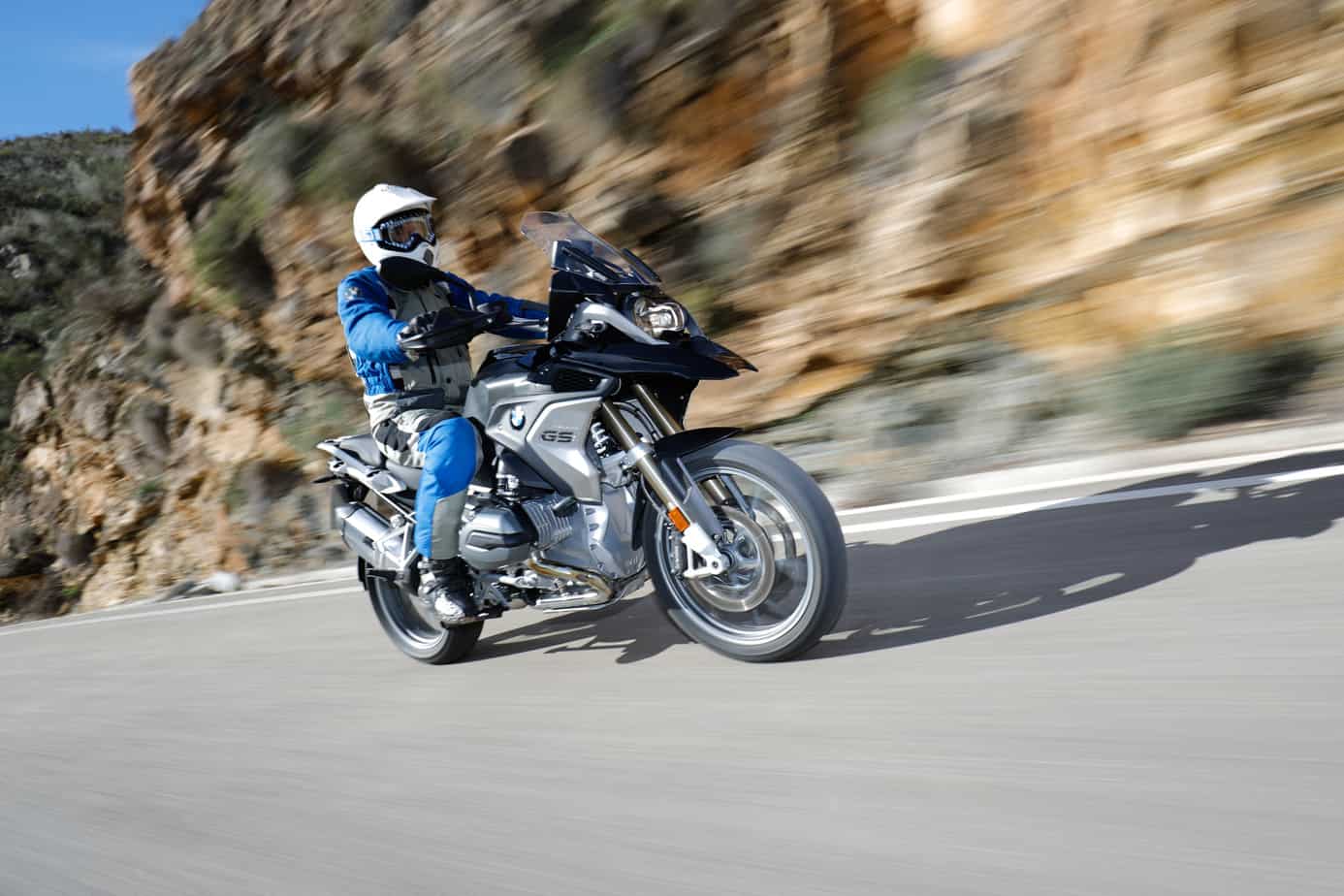
Meeting the BMW Boffins
I was lucky enough to get the opportunity to talk to some of the senior BMW designers and product managers at the new GS launch – they’re all bikers by the way, replete with tattoos, beards and earrings – seriously! I expected men in white coats and sandals, but I got sideburns, boots and leather jackets. Bikes built by bikers for bikers. The success of the GS? It all makes sense now.
The discussion got onto the increased use of technology within motorcycle design and whether, like cars we’ll be seeing the development of an ‘autonomous’ motorcycle? Their answer was reassuring and extremely interesting…
“…I think we will continue to see increasing developments with intelligent technologies, but this won’t lead to autonomous bikes – that doesn’t make sense. No, I see motorcycles using technology to intelligently communicate with other road vehicles alerting them to your presence and increasing levels of road safety like we’ve never seen before.”
Motorcycles are currently using multiple sensors to determine lean angles, speed, braking force and suspension stresses etc. All of this data is used in ‘intelligent’ bike performance, interoperating with ABS, Dynamic Traction Control (DTC) and Electronic Suspension Adjustment (ESA) etc., as we find in the GS Rallye.
But going forward we’re going to see the integration of these and related intelligent technologies focussing on vehicle to vehicle background communications. Vehicles (Motorcycles and Cars) will be ‘aware’ of each others presence, velocity and trajectory. This technology will trigger alerts and perhaps even take independent action to avoid an accident. Vehicles may also communicate with traffic lights, road crossings and even intersections and buildings. While these technologies will increase motorcycle safety, they may also present us with challenges. Where should we draw the line between the freedom of the ride and the influence, interaction and possibly intervention of intelligent technologies? Perhaps this is a discussion for a future date.
To round up
So is the top tier offering by BMW under threat from other brands? Of course it is, but this is healthy and keeps us all moving forward. However, BMW does have a quality heritage, an enviable track record and a great understanding of the adventure market place, while some of the competitors are still having to prove themselves. The adventure market still seems to have good momentum, likely only squeezed by the current success of the ‘classic / retro’ genre, highlighted by Triumph’s Bonneville derivatives, Ducati’s Scrambler and BMW’s own RnineT.
I don’t believe another McGregor / Boorman injection is required. The new R1200 launch will undoubtedly be a success and the significant updates and choice between the more off-grid Rallye and the road biased Exclusive will cater for everyone.
BMW’s vision, their knowledge and understanding of the industry and their use of emerging technologies has kept them up in the number one spot. I can only expect them to continue to deliver world beating credible models, harnessing new technology that helps keep motorcycling exciting, while at the same time adding to its safety.
The only real negatives I can muster for the Rallye is the price. It’s an expensive bit of kit to throw around, but if money is not your barrier, then, it’s a great motorcycle for sure.
The BMW GS dynasty is safe – for now.
| The Figures | |
| Engine: Air/Liquid cooled Boxer 1170cc | |
| HP: 125hp | |
| Top Speed: 200kph | |
| Weight: 244k | |
| Seat Height: Adjustable 850 / 870 mm (lowered suspension 800 / 820 mm) Fuel Capacity: 20ltrs | |
| Some top Features & Updates | |
| Judder Damper on Transmission Output Shaft | |
| Revised Selector Drum and Transmission Shaft | |
| Riding Mode Pro (Dynamic, Dynamic Pro, Enduro, Enduro Pro) | |
| Next Generation Electronic Suspension ESA – self levelling | |
| DTC – Traction Control | |
| Shift Assist Pro | |
| ABS Pro | |
| Harder Off-Road Suspension | |
| Hill Start Control | |
| Dynamic Brake Lighting | |
| Flat Enduro Seat | |
| The Riding Modes – in brief | |
| Rain – Gentle throttle, DTC early intervention, | |
| Road – Optimum throttle, optimum DTC | |
| Dynamic – Direct throttle, drifting possible with skilled rider | |
| Dynamic Pro – Fully Customisable | |
| Enduro – Gentle throttle, DTC more spin possible & Off-Road ABS | |
| Enduro Pro – Fully Customisable, Knobbly Tyres, No ABS on rear wheel | |
| The General Option Packs | |
| • | Dynamic Package: Comprises DTC, LED Headlight, Hill StartControl, Shift Assistant Pro, Riding Modes Pro, ABS Pro, LED Turn Indicators |
| • | Comfort Package: Comprises chrome exhaust system, heated grips, Tyre Pressure Control RDC, Hand Protectors |
| • | Touring Package: Comprises of Dynamic ESA, Keyless Ride, OnBoard Computer Pro, GPS Mount, Cruise Control |
Author: Billy Ward Twitter: @Biketruck Website: www.biketruck.com YouTube Channel: www.youtube.com/c/BillyWard



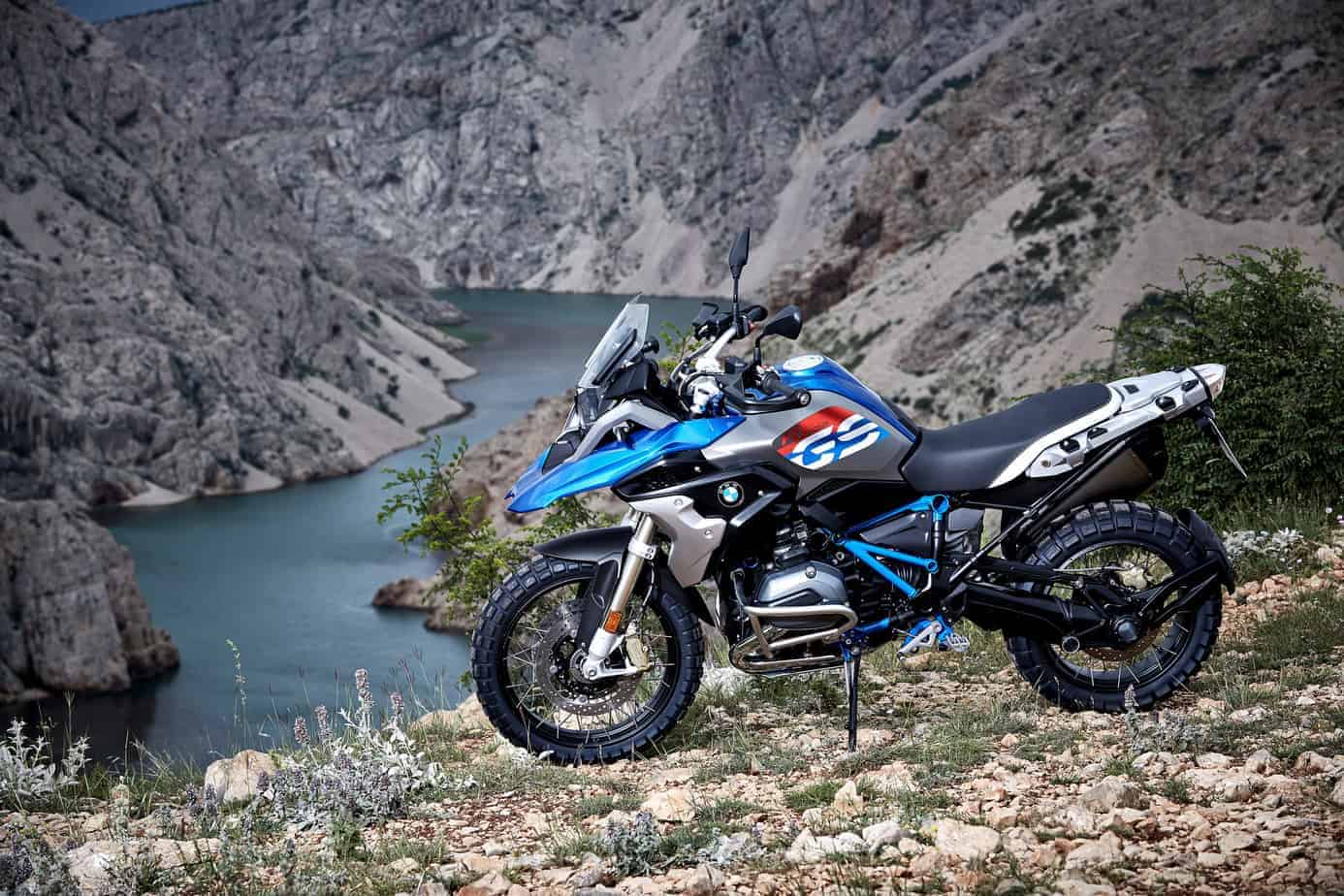
One Comment
Bradley
December 14th, 2018 at 11:27 pmThanks for the review! The explanations of the various systems and enhancements are very helpful, as I purchased my 2017 Rally edition 2nd hand with only 2,300 miles on it — I didn’t go to a dealer and get their whole spiel.
This is my 3rd GS, and while I’ve only used it for commuting over the 2 weeks I’ve owned it, all I can say is holy crap, it just blows away my other GS’s, and most any other bike I’ve ridden (not a huge number). I really, really didn’t want to get too worked up about it, lest I seem materialistic (hey it’s a darned expensive bike comparatively), but oh jeez I think I love it!! LOL I can hardly wait to put it through its paces on tarmac and dirt. I am very pleased to learn that it has the taller suspension, as that is something I felt was needed with my old GS’s when offroad, but a shorter 1st gear will be missed. Sadly, here in the US, the rallye seat is not standard and I don’t know if it’s even an option.